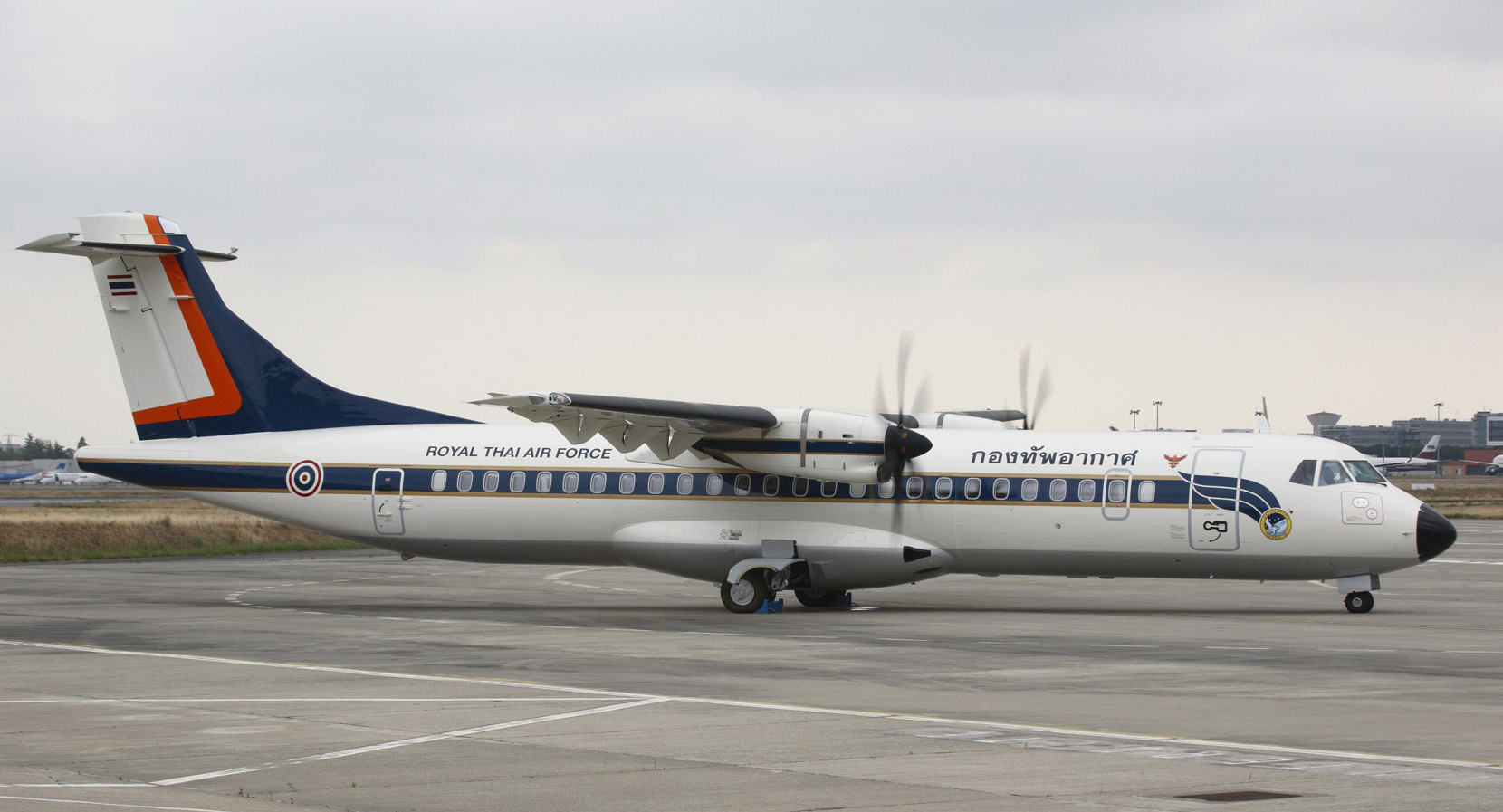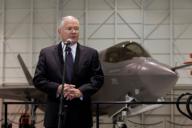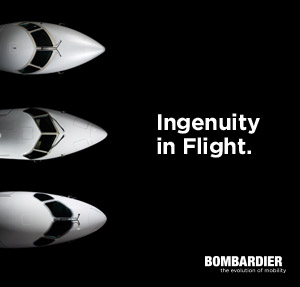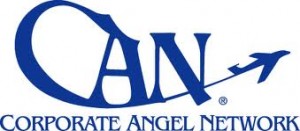Embraer at Air & Space Conference and Technology Exposition
September 10, 2009
The light attack and advanced training Super Tucano turboprop will be highlighted
São José dos Campos, September 10, 2009 –
Embraer is a newcomer to the Air Force
Association (AFA) Annual Air & Space
Conference and Technology Exposition taking
place September 14-16, in its 24th edition. The
conference will be held at the Gaylord National
Hotel & Convention Center on the Potomac, in
National Harbor, Md., just minutes from
downtown Washington, D.C.. At the event,
Embraer will promote its most successful defense
product: the Super Tucano, a single- or two-seat
light attack and advanced training turboprop.
“The AFA Annual Air & Space Conference and Technology Exposition is one of the market’s
most productive trade events,” says Acir Padilha, Embraer Vice President, Marketing and
Sales, Defense Market. “Therefore, we are glad to have this opportunity to promote the Super
Tucano, the only turboprop aircraft in production, worldwide, with its low operating cost,
which is combat proven and specifically designed for counterinsurgency, irregular warfare,
and day and night missions, as well as advanced training.”
Of a total of 169 aircraft sold, so far – 99 of which to the Brazilian Air Force (Força Aérea
Brasileira – FAB) – Embraer has orders from the Air Forces of Chile, the Dominican
Republic, and Ecuador. The Super Tucano currently operates successfully with the Brazilian
and Colombian Air Forces on border surveillance and operational missions.
Hawker Beechcraft Announces First Flight, Accelerated Testing of AT-6 Light Attack Aircraft
September 10, 2009
Advanced derivative of world’s most proven trainer aircraft will offer light attack, armed reconnaissance solution for warfighter needs
WICHITA, Kan. (Sep. 10, 2009) – Hawker Beechcraft Corporation (HBC) today announced the successful first flight of its AT-6 prototype and the program’s progression into the next phase of flight test. The AT-6 prototype is a structurally strengthened derivative of the highly successful U.S. Air Force and U.S. Navy T‑6A/B trainer – the world’s most proven military trainer aircraft – that will offer the U.S. Air Force and partner nations a robust airpower solution that meets a wide spectrum of needs at a fraction of the cost of other platforms.
“We are very optimistic about the role the AT-6 will play for the warfighter – both in the U.S. and in partner air forces around the world,” said Bill Boisture, HBC chairman and CEO. “This is going to be a great airplane and I am pleased with the rapid pace we are moving through our planned test program. We are almost three weeks ahead of schedule. We believe the AT-6 offers the broadest range capabilities available in the market and that is why we continue to invest in its future today.”
The AT-6 is designed to be able to quickly transition pilots between basic flight training missions and complex NetCentric light attack and armed reconnaissance missions. The next phase of flight testing will last through October, during which the company will continue flight envelope expansion of the heavily instrumented AT-6 prototype, along with performance and handling qualities assessments with various external store configurations.
The Hawker Beechcraft T-6 derivative fleet recently passed the one million flight hour mark and 500th delivery with aircraft currently being flown by the U.S. Air Force, U.S. Navy, Hellenic Air Force of Greece, NATO Flying Training in Canada and the Israeli Air Force. T-6 trainers for the Iraqi Air Force are currently in production in Wichita, Kan., and are slated for delivery to Iraq beginning later this year.
Hawker Beechcraft Corporation is a world-leading manufacturer of business, special mission and trainer aircraft – designing, marketing and supporting aviation products and services for businesses, governments and individuals worldwide. The company’s headquarters and major facilities are located in Wichita, Kan., with operations in Salina, Kan.; Little Rock, Ark.; Chester, England, U.K.; and Chihuahua, Mexico. The company leads the industry with a global network of more than 100 factory-owned and authorized service centers.
The Royal Thai Air Force receives its first VIP ATR 72-500
September 10, 2009
Thailand’s RTAF (Royal Thai Air Force) today took delivery of its first ATR 72-500 from a contract that was signed in 2007 for four ATR 72 VIP aircraft. This first ATR features a state-of-the-art VIP cabin interior and will be dedicated to the transport of the Thai Royal Family, as well as other Government and military officials.
The aircraft is powered by two PW 127M engines, and is equipped with ATR’s optional front passenger door. The remaining three ATR 72-500s will be delivered before the end of the year.
ATR aircraft have been operating in Thailand since 1990, with three airlines, Thai Airways, Bangkok Airways and PB Air, currently operating ATR 72s. The aircraft delivered today is the first being ordered by the Government.
Stéphane Mayer, Chief Executive Officer of ATR, declared: “We are confident that these specifically designed VIP ATR aircraft will fulfill the transportation needs of the highest authorities in Thailand”.
He also underlined “the importance of the strong support base of ATR in South East Asia, which is definitely contributing to our continued success in this part of the world. Airlines, as well as Governments, know they can count on our expertise and our proximity to efficiently operate their ATR fleets.”
Commenting on ATR presence in South East Asia, he added: “Our support facilities include the Asian ATR Training Center (AATC), located in Bangkok and equipped with two Full Flight Simulators, enabling us to provide high qualified training courses to pilots and engineers throughout the region. In addition, we rely on ATR Eastern Support (AES) in Singapore for spares and technical support to all our operators in Asia and the Pacific.”
Hawker Beechcraft Delivers First T-6B Trainer Aircraft to U.S. Navy
September 4, 2009
Avionics upgrade of world’s most successful trainer to be Navy’s primary flight training aircraft
WICHITA, Kan. (Sept. 3, 2009) – Hawker Beechcraft Corporation (HBC) today announced the delivery of its first two T-6B aircraft, the avionics upgrade variant of the highly successful T-6A trainer, to the U.S. Navy. The Navy took possession of the aircraft (designated PN-1 and PN-2) at HBC’s headquarters in Wichita, Kan. From Wichita, the aircraft were flown to Whiting Field in Florida. The Navy is expected to acquire more than 260 T-6B aircraft to replace the aging T-34 fleet.
“The T-6B aircraft represent the future of Navy primary pilot training,” said Jim Maslowski, president, U.S. and International Government Business. “We are pleased with our partnership with the U.S. Navy and proud to supply this training aircraft for military student pilots.”
Full rate production of the T-6B avionics upgrade and flight training for the initial cadre of Navy pilots began at the HBC facility in Wichita, Kan., following Federal Aviation Administration (FAA) certification. Deliveries of Navy aircraft will continue in December 2009, with 15 T-6B aircraft delivered by April 2010 for Initial Operating Capability for Navy student pilot training.
The T-6B avionics upgrade combines the best of the highly successful T-6A primary trainer, in use today by the U.S. Air Force and U.S. Navy, with a glass cockpit configuration that includes three multi-function displays, hands-on-throttle-and-stick functionality, and Head-Up Display. The T-6B provides primary pilot training with enhanced capabilities in air-to-air and air-to-ground mission areas.
Hawker Beechcraft Corporation is a world-leading manufacturer of business, special mission and trainer aircraft – designing, marketing and supporting aviation products and services for businesses, governments and individuals worldwide. The company’s headquarters and major facilities are located in Wichita, Kan., with operations in Salina, Kan.; Little Rock, Ark.; Chester, England, U.K.; and Chihuahua, Mexico. The company leads the industry with a global network of more than 100 factory-owned and authorized service centers.
U.S. Defense Secretary Underscores F-35 Importance During Lockheed Martin Visit
September 1, 2009
U.S. Secretary of Defense Robert Gates speaks to reporters at a news conference in front of an F-35 Lightning II fighter at Lockheed Martin, Fort Worth, Texas. Gates said the United States “cannot afford as a nation not to have this airplane.”. (PRNewsFoto/Lockheed Martin Aeronautics Company, John Rossino)
FORT WORTH, Texas, Aug. 31 /PRNewswire/ — United States Secretary of Defense Robert Gates visited Lockheed Martin’s (NYSE: LMT) final assembly operation for the F-35 Lightning II stealth fighter today, conveying optimism for the program’s future and emphasizing the F-35’s importance to global security.
“We cannot afford as a nation not to have this airplane,” Gates said at a news conference following a tour of the factory where the F-35 is assembled. “I was very impressed by what I saw this morning – by the investments that have been made in the production line, the robotics and automation. I’m heartened by what I’ve seen . . . but especially by the commitment of the people involved in putting this airplane together.”
Gates walked along portions of the mile-long factory floor, where he stopped to converse with F-35 workers, and saw all three variants of the aircraft in various stages of assembly.
Robert J. Stevens, chairman, president and CEO of Lockheed Martin Corp., said it was a “great honor” to host Secretary Gates.
“The purpose of the Secretary’s visit was to make very clear to us his expectations and our need to perform to our plans. That means producing a superior technological product and making sure that we maintain our schedule, enable the government to start training pilots in 2011, and fully equipping the Marine Corps for initial operational capability in 2012. It also means we’ll support our allied governments’ interests in the program while maintaining affordability,” Stevens said. “So, there’s a full array of things that we have to do, but we have great confidence in the team that we’ve put together here.”
The visit was Gates’ first to Lockheed Martin’s Fort Worth plant, which also has served as the final assembly point for the B-24 Liberator, B-36 Peacemaker, B-58 Hustler, F-111 Aardvark and F-16 Fighting Falcon.
The Lockheed Martin F-35 is a 5th generation fighter, uniquely characterized by a combination of advanced stealth with supersonic speed and high agility, sensor fusion, network-enabled capabilities and advanced sustainment. The three F-35 variants are derived from a common design, are being developed together and will use the same sustainment infrastructure worldwide, bringing economies of commonality and scale.
The United States and eight international partners are planning to buy more than 3,000 F-35 aircraft.
Boeing Executive Scott Carson Announces Retirement; Albaugh Named Commercial Airplanes Leader, Muilenburg to Head Integrated Defense Systems
September 1, 2009
CHICAGO, Aug. 31 /PRNewswire-FirstCall/ — Boeing Commercial Airplanes President and CEO Scott Carson announced today that he will retire from the company at the end of the year.
Boeing Chairman, President and CEO Jim McNerney has named Jim Albaugh, 59, to Carson’s leadership role at Boeing Commercial Airplanes (BCA), and Dennis Muilenburg, 45, to succeed Albaugh as president and CEO of Boeing Integrated Defense Systems (IDS). Both appointments are effective Sept. 1.
Carson, 63, has led BCA since 2006 after two years heading up the unit’s sales organization, where he was credited with reinvigorating sales of Boeing commercial airplanes and related services to airline customers and leasing companies around the world. He previously served as BCA’s executive vice president and chief financial officer, where he led the finance and business strategy organizations, as well as information systems and services. He also held leadership positions in the company’s defense business and was the first president of Connexion by Boeing.
“The Boeing board of directors and I appreciate Scott’s long record of accomplishment across many disciplines, functions and businesses, and the enduring contributions he has made to Boeing through 38 years of service,” said McNerney. “Thanks to his leadership and operational experience, Boeing Commercial Airplanes has performed extremely well in a tough business environment and remains positioned solidly for continued market success.”
McNerney said that Carson and Albaugh will work together to ensure a smooth transition of customer and other business relationships, and that Carson will also assist on special projects for the company through year end. He will continue to lead the United Way of King County’s 2009-2010 fund-raising campaign, even after his retirement.
Albaugh, a 34-year company veteran with extensive experience in development programs and manufacturing, has led Boeing’s defense, space and associated services businesses since 2002. Under his leadership IDS revenue has grown from $25 billion to an expected $34 billion in 2009, and now accounts for roughly half of Boeing’s annual sales. Prior to his most recent assignment, he led Boeing’s growth in space and communications, including network-centric operations, global missile defense, combat systems, and system-of-systems technologies. He began his career with Rockwell’s aerospace and defense businesses, which Boeing acquired in 1996.
“Jim is a seasoned and effective aerospace executive with substantial experience leading and integrating technically complex businesses and programs from initial development through full production and delivery. His program management and engineering focus will help ensure the success of BCA’s key development and production programs,” McNerney said. “On top of that, as a Washington state native and the leader of more than 9,000 IDS employees working in the Puget Sound region, he is familiar with the people, issues and programs in the area. He is the ideal leader for BCA at this time,” he added.
Muilenburg moves to his new position from Integrated Defense System’s Global Services & Support unit, where he served as president of the $8 billion business that provides global after-delivery support for military platforms and systems, as well as a broad array of defense and government services. Prior assignments include leadership of the Combat Systems Division and Future Combat Systems, the company’s development program for the U.S. Army. He also led the overall engineering development of Boeing’s program to modernize global air traffic management systems.
“Dennis is ready to step up and lead the IDS team,” said McNerney. “His experience in technology integration; track record delivering large-scale programs on time and budget; and work with customers in new, developing markets will help us generate new momentum and long-term growth,” he added.
Albaugh holds bachelor’s degrees in mathematics and physics from Willamette University, and a master’s degree in civil engineering from Columbia University. He will relocate soon to the Seattle area.
Born in Iowa, Muilenburg earned a bachelor’s degree in aerospace engineering from Iowa State University and a master’s degree in aeronautics and astronautics from the University of Washington. He will continue to be based in St. Louis and spend substantial time in the Washington, D.C. area.
A replacement for Muilenburg will be named at a later date.
Lockheed Martin Airborne Intelligence Test-Bed Completes Maiden Flight; Receives FAA Certification
August 25, 2009
DENVER, Aug. 25 /PRNewswire/ — Warfighters will receive critical intelligence, surveillance and reconnaissance (ISR) capabilities sooner, now that the airborne test-bed developed by Lockheed Martin (NYSE: LMT) has received its Experimental Airworthiness Certificate from the Federal Aviation Administration. This Airborne Multi-Intelligence Laboratory (AML) will be used to tailor advanced sensor combinations to resolve specific military, strategic intelligence and homeland security mission needs.
“We’ve designed the AML so that we can easily test a myriad of sensors to advance the science and art of correlating diverse types of intelligence — with the goal of rapidly providing high-quality data,” said Jim Quinn, Lockheed Martin Information Systems & Global Services-Defense’s vice president of C4ISR Systems.
A reconfigured Gulfstream III business jet, this multi-INT test-bed will be used for the development of new sensors and processing capabilities for both Lockheed Martin and its customers to expedite the flow of C4ISR capability to warfighters in theater.
A wide array of features on board the aircraft will facilitate this experimentation, including a computing capability that supports most commercial operating systems, a radome on the belly of the aircraft with ample volume for a range of sensors, and four workstations. In addition, the AML can process data both onboard and on the ground to accommodate a variety of experiments. While the AML is equipped with a robust suite of sensors as well as wideband and narrowband data links, the intent is to rotate sensors as necessary to answer specific requirements. To achieve that goal, the AML incorporates an easily reconfigurable architecture designed to allow different sensors and equipment to be rapidly integrated into the aircraft’s mission systems.
This architecture also allows for future testing of innovative techniques for multi-INT mission planning, intelligence gathering, processing, exploitation and dissemination for a wide variety of missions across the spectrum of operations. Near-term experimentation includes participation in the U.S. Army’s upcoming C4ISR On-the-Move exercise, slated for the end of August at Fort Dix, N.J.
Headquartered in Bethesda, Md., Lockheed Martin is a global security company that employs about 140,000 people worldwide and is principally engaged in the research, design, development, manufacture, integration and sustainment of advanced technology systems, products and services. The corporation reported 2008 sales of $42.7 billion.
BAE Systems Selects AAR for Military Shelters
August 25, 2009
WOOD DALE, Ill., Aug. 25 /PRNewswire-FirstCall/ — AAR (NYSE: AIR) announced today that it has received a contract from BAE Systems to manufacture mobile shelters for the U.S. Army’s Family of Medium Tactical Vehicles (FMTV) program. BAE Systems is exercising the one-year option on a contract issued to AAR in October 2008 with a $40 million order for additional shelters. Delivery of the shelters is scheduled to start in April 2010 and be completed by November 2010.
“We are very pleased that BAE Systems has extended and expanded this program and that our mobility products will continue to be an integral part of the U.S. Army’s ground operations,” said Timothy J. Romenesko, President and Chief Operating Officer of AAR CORP. “AAR is dedicated to supporting the warfighter in a wide variety of functions and operations. Our shelters help our soldiers achieve more by increasing efficiency, mobility and readiness.”
The shelters will be built by AAR’s Mobility Systems division, which designs, builds, integrates and supports rapid deployment equipment, expeditionary systems and command and control systems for defense customers and prime contractors.
BAE Systems’ Global Tactical Systems business produces the FMTV at its facility in Sealy, Texas. The FMTV is the medium tactical vehicle platform of choice for the U.S. Army in the 2.5- and 5-ton cargo vehicle class. More than 56,000 FMTVs have been produced in 21 variants during the vehicle’s 17-year production run.
About AAR
AAR is a leading provider of products and value-added services to the worldwide aerospace and defense industry. With facilities and sales locations around the world, AAR uses its close-to-the-customer business model to serve aviation and defense customers through four operating segments: Aviation Supply Chain; Maintenance, Repair and Overhaul; Structures and Systems; and Aircraft Sales and Leasing. More information can be found at www.aarcorp.com.
Raytheon Delivers 1000th Evolved SeaSparrow Missile
August 25, 2009
EAST CAMDEN, Ark., Aug. 25, 2009 /PRNewswire/ — Raytheon Company (NYSE: RTN) delivered the 1000th Evolved SeaSparrow Missile to a multinational consortium during a ceremony at the Raytheon Missile Systems Weapon Integration Center – Camden.
Deployed by the U.S. Navy and nine international fleets, ESSM defends the battlespace by delivering ship self-defense firepower against high-G maneuvering anti-ship cruise missiles as well as surface and low-velocity air threats.
“ESSM’s increased speed coupled with its improved guidance system allows for engagements at extended ranges,” said Capt. Mike Anderson, the U.S. Navy’s ESSM project manager. “The hallmarks of the missile are its international design, combat system flexibility and performance edge.”
As a tail-controlled missile, ESSM utilizes recent enhancements to its guidance system to take advantage of improved seeker sensitivity, increased propulsion and greater weapon accuracy. Combined, these features result in ESSM arriving at the intercept point with more endgame speed and agility to counter the threat.
“Raytheon leads an international team of 18 world-class companies in developing and producing ESSM,” said Ed Roesly, Raytheon’s ESSM program director. “Our team develops the industrial bases of all participating countries, uses the expertise and technological skills of each participant and provides every country with a return on investment.”
Raytheon Company, with 2008 sales of $23.2 billion, is a technology and innovation leader specializing in defense, homeland security and other government markets throughout the world. With a history of innovation spanning 87 years, Raytheon provides state-of-the-art electronics, mission systems integration and other capabilities in the areas of sensing; effects; and command, control, communications and intelligence systems, as well as a broad range of mission support services. With headquarters in Waltham, Mass., Raytheon employs 73,000 people worldwide.
Lockheed Martin F-35 Successful in First Probe-and-Drogue Aerial Refueling
August 15, 2009
|
|||||||||
|
|
|||||||||
“The F-35 program is on the cusp of a tremendous expansion in flight test as a large number of new aircraft enter the test fleet this year and early next year,” said Dan Crowley, Lockheed Martin executive vice president and F-35 program general manager. “This milestone will help ensure that we fill the pipeline between Fort Worth and Pax River with F-35s and maintain our flight-test tempo.”
During Thursday’s flight, the F-35B designated BF-2 (the second STOVL flight test aircraft), began a series of tests in which fuel is uploaded into the aircraft at 10,000, 15,000 and 20,000 feet, at speeds ranging from 200 to 250 knots. The pilot on the initial F-35B aerial refueling flight was U.S. Marine Corps Maj. Joseph T. “O.D.” Bachmann.
The refueling mission also marked the first time a Lockheed Martin KC-130 tanker has been used to refuel an F-35. Previous refueling missions with the F-35A conventional takeoff and landing variant were accomplished with a KC-135 tanker. To date, the first F-35A has received approximately 110,000 pounds of fuel during aerial refuelings.
Probe-and-drogue refueling employs a flexible hose that trails from the tanker aircraft. The basketlike drogue at the end of the hose connects to the receiving aircraft’s probe, which, in the case of the F-35, resides on the right side of the forward fuselage and retracts when not in use. The U.S. Navy, Marine Corps and the air forces of many other countries use the probe/drogue system, while the U.S. Air Force refuels its aircraft via a rigid flying boom that inserts into a receptacle on the receiving airplane.
The Lockheed Martin F-35 and F-22 are the world’s only 5th generation fighters, uniquely characterized by a combination of advanced stealth with supersonic speed and high agility, sensor fusion, network-enabled capabilities and advanced sustainment. The three F-35 variants are derived from a common design, are being developed together and will use the same sustainment infrastructure worldwide, bringing economies of commonality and scale.
Lockheed Martin is developing the F-35 with its principal industrial partners, Northrop Grumman and BAE Systems. Two separate, interchangeable F-35 engines are under development: the Pratt & Whitney F135 and the GE Rolls-Royce Fighter Engine Team F136.
Headquartered in Bethesda, Md., Lockheed Martin is a global security company that employs about 146,000 people worldwide and is principally engaged in the research, design, development, manufacture, integration and sustainment of advanced technology systems, products and services. The corporation reported 2008 sales of $42.7 billion.
<










